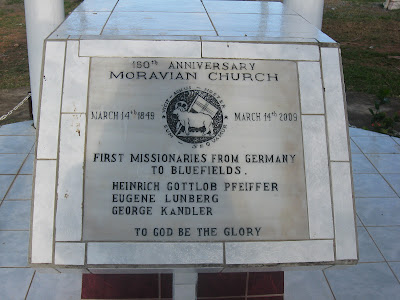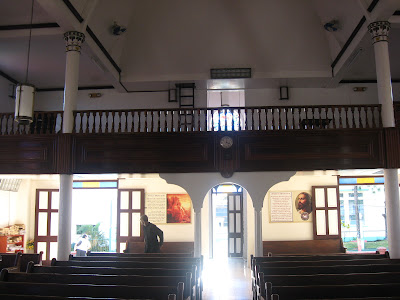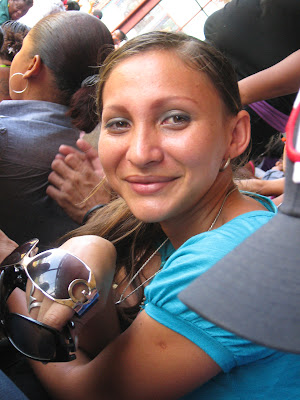I want to give everyone a better idea about what my job here entails. I work in the administrative branch of the main health center. As Bluefields has an urban area of about 50,000 people, there are several small health centers and one centralized health center that contains administrative offices that oversee the whole municipality, which includes the rural area as well. That is where my department is housed. There is also a hospital in Bluefields. And it should be noted that this is the ONLY hospital in the entire RAAS. In other municipalities in the RAAS and in the rural health posts in the Bluefields municipality, some of the health posts have beds in that they can provide very basic hospital care (ex: women can give birth there or if you needed an IV because you were severely dehydrated due to diarrhea you could get it). Within each health center are teams of doctors and nurses called equipos basicos (it means basic team in English for my non Spanish speaking readers) and each team is assigned to care for one neighborhood. The Nicaraguan Ministry of Health calls this model of healthcare delivery, MOSAF (and right now I can’t remember what the acronym stands for, modelo….something something). Therefore, all patient records are kept according to the neighborhood a patient lives in. Ideally, one of the ways the MOSAF should function is that in case a pregnant woman doesn’t come in for one of her scheduled prenatal visits, then within 48 hours the equipo basico has to go to her house and find her. This same process would also be the same for children and vaccination appointments.
The name of my department is Attencion Integral de la Mujer, Niñez y Adolescente, AIMNA. In general, we monitor pregnancies, nutrition and vaccination of children under five years of age, and use of family planning services among adolescents. Right now I’d like to take the opportunity to mention that almost 40% of all pregnancies in Bluefields are girls 19 and younger. Dang! Talk about a problem, right? A big part of my job right now is working on the Censo Gerencial, which is a census of all the pregnant women in the municipality, rural and urban. An effective census relies heavily on the equipos basicos keeping up with their pregnant patients. As I have mentioned in previous posts, the RAAS has the highest maternal deaths in the country. Having a census such as this is one way of monitoring pregnant women and identifying those who are high risk so that the number of maternal deaths might be reduced.
In addition to keeping up with a bunch of data, we also do health promotion. For example, we give workshops to community health volunteers, midwives, and medical residents among others on various women’s health related themes. Most recently, I gave a workshop on domestic violence to a group of community health volunteers. In a few weeks we are going to the rural health post in San Francisco to promote Plan de Parto, a nationwide program from the Ministry of Health that encourages pregnant women to make a birth plan, specifically rural pregnant women. This is something that American women find compulsory, but is quite a new concept here in Nicaragua. This program encourages women to give birth at the health post or hospital instead of at home and aids them in saving their money for the trip there. It also helps them plan who will care for their other children while they are away and recovering thereafter.
Many rural pregnant women might live several hours on horseback from the nearest health post not including another two hour or more boat ride to Bluefields if they need to come to the hospital. Therefore is it of utmost importance to encourage them to plan ahead so they are prepared in case of emergency. It could save their life! This program is another activity designed to reduce maternal deaths. Most of the maternal deaths that occur are among rural women who attempt to give birth in their home but are then faced with an obstetric emergency and cannot get proper help in time.
The reduction of maternal mortality is part of Millennium Development Goal Number 5. The Millennium Development Goals are a set of eight goals aimed at reducing poverty and the unnecessary deaths and illness that result from it around the world by 2/3 by 2015. If you want to read more about them or see the world’s progress, go here www.un.org/millenniumgoals I find it reassuring to know that the Nicaraguan government has taken the goals very seriously, specifically the reduction of maternal mortality as they are making every effort in their capacity to reduce it. And not just because it’s a statistic that indicates a certain level of development, but because a woman should not have to lose her life in order to give life to her child.
As I have said before my job here will shift and change over my two years and as new projects develop and old ones wrap up, I will do my to keep my blog updated.





















